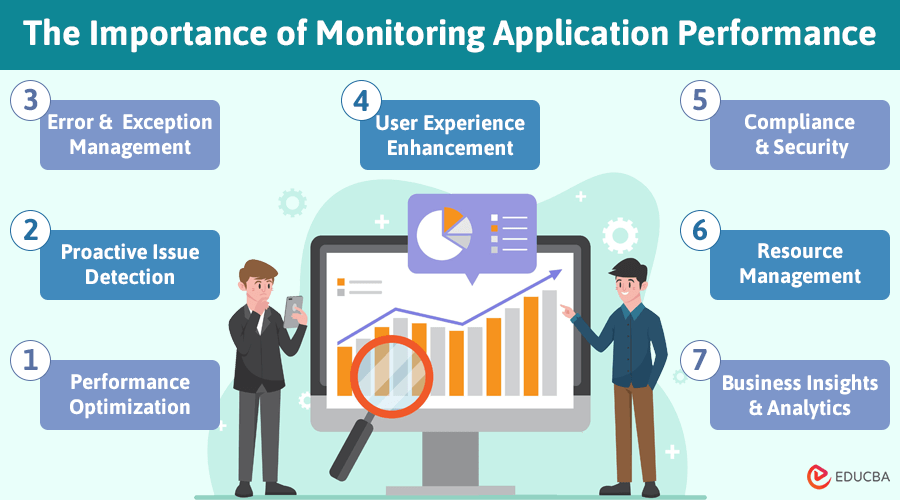
Importance of Monitoring Application Performance – Overview
Applications are the backbone of business operations and user interactions. Whether it is a customer-facing app, an internal tool, or an enterprise system, ensuring optimal performance and reliability is crucial. This is where monitoring application performance becomes essential. It involves continuously tracking an application’s performance, functionality, and overall health to ensure smooth operations. However, why is this monitoring so important? Let us explore the importance of monitoring application performance and why Dotcom Tools is an excellent choice.
The Importance of Monitoring Application Performance
Monitoring application performance is crucial, especially as businesses and users rely heavily on digital applications. Here is why it matters:
#1. Performance Optimization
Application performance directly impacts user satisfaction and business success. Monitoring tools, like website speed test, help identify performance bottlenecks and inefficiencies, enabling teams to optimize code, improve responsiveness, and deliver a smoother user experience. Businesses can make informed decisions on where improvements are needed by closely monitoring metrics such as response times and throughput.
#2. Proactive Issue Detection
Monitoring tools allow the early detection of potential issues before they escalate into major problems. By setting up alerts for anomalies or performance degradation, teams can address issues proactively instead of reacting after they affect users. This helps minimize downtime and reduces the impact on user and business operations.
#3. Error and Exception Management
Tracking errors and exceptions is crucial for maintaining application reliability. Monitoring solutions capture detailed error logs and exception traces, helping developers diagnose issues more efficiently. This speeds up problem resolution and helps understand root causes, preventing future occurrences.
#4. User Experience Enhancement
The importance of monitoring application performance is evident in how it impacts user experience. Slow load times, crashes, or unresponsive features can frustrate users, reducing engagement or losing customers. Monitoring tools provide insights into user interactions and application behavior, enabling developers to fine-tune the user experience and ensure smooth interactions with the software.
#5. Compliance and Security
Many industries have strict regulatory requirements regarding data and application security. Continuous monitoring helps ensure compliance with these regulations by providing visibility into access patterns, data integrity, and potential security breaches. It also aids in detecting and responding to security threats in real time.
#6. Resource Management
Efficient resource management is key to cost control and application performance. Monitoring tools track resource usage, such as CPU, memory, and network bandwidth, enabling better planning and scaling decisions. This ensures that resources are used effectively and prevents over-provisioning or under-provisioning issues.
#7. Business Insights and Analytics
Monitoring application performance provides valuable data that can be analyzed to gain insights into user behaviour, application performance trends, and business impact. This information is essential for strategic planning, identifying growth opportunities, and making data-driven decisions to improve the application’s effectiveness.
Why Choose Dotcom Tools?
When it comes to selecting a monitoring solution, Dotcom Tools stands out for several reasons:
1. Comprehensive Monitoring Suite
Dotcom Tools offers a range of monitoring capabilities, including website performance, server uptime, and application health. This comprehensive suite ensures that all critical aspects of your application are covered, providing a holistic view of its performance.
2. User-Friendly Interface
The platform is renowned for its easy-to-use and intuitive interface. This makes it easy for teams to set up monitoring, customize alerts, and analyze performance metrics without extensive training or technical expertise.
3. Real-Time Alerts and Reporting
Dotcom Tools excels in providing real-time alerts and detailed reporting. This allows teams to respond to issues and analyze performance trends quickly. Customizable alerts ensure you are immediately notified of critical issues, minimizing downtime and disruptions.
4. Scalability
As your application grows, so do your monitoring needs. Dotcom Tools scales with your application, providing flexible options to handle increasing complexity and traffic. This ensures you have visibility and control regardless of your application’s size.
5. Cost-Effective Solutions
Dotcom Tools offers various pricing plans to suit different needs and budgets. Whether a small business or a large enterprise, you can find a plan that fits your requirements without overspending.
7. Integration Capabilities
The tool integrates seamlessly with popular applications and platforms, including cloud services and development tools. This integration capability enhances functionality and creates a more cohesive monitoring strategy across your tech stack.
Final Thoughts
Monitoring application performance is not just a technical necessity but a strategic imperative. It ensures your application performs optimally, addresses issues proactively, and delivers an excellent user experience. You gain valuable insights, improve performance, and maintain a competitive edge by leveraging tools like Dotcom Tools. Investing in a robust monitoring solution is a smart move for any organization looking to protect its digital assets and drive business success.
Recommended Articles
We hope this overview of the importance of monitoring application performance has been informative. Look into these recommended articles for further insights on optimizing application performance and effective monitoring strategies.
